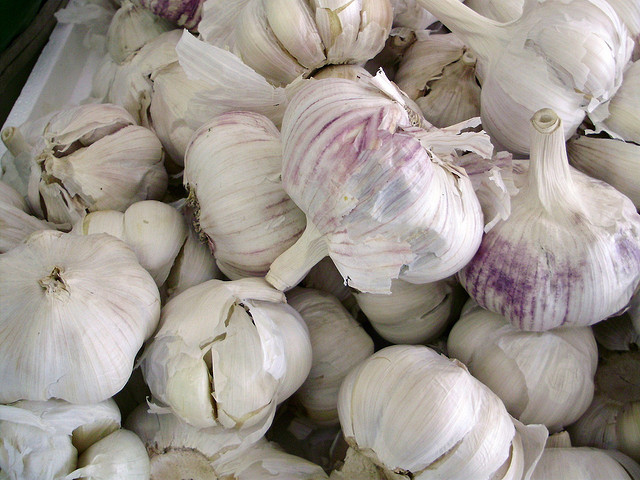 It’s that time of the year when we garlic lovers need to be thinking about starting our next garlic crop. For those of us in the upper Southeast part of the country, the best planting time will be in November. Why November? Because for the cloves to develop nicely, they need a temperature between 32 degrees and 50 degrees fahrenheit. November tends to offer those kind of temperatures here in the southeast, but you can stretch this timing in either direction a bit. Later is better than earlier if you want the largest cloves.
It’s that time of the year when we garlic lovers need to be thinking about starting our next garlic crop. For those of us in the upper Southeast part of the country, the best planting time will be in November. Why November? Because for the cloves to develop nicely, they need a temperature between 32 degrees and 50 degrees fahrenheit. November tends to offer those kind of temperatures here in the southeast, but you can stretch this timing in either direction a bit. Later is better than earlier if you want the largest cloves.
So, how do you grow the best garlic? Here are a few best practices for doing just that.
Grow the right variety.
Hardneck varieties grow best in cold climates, so we suggest sticking to these. Do not use store bought garlic cloves. They are usually treated with growth inhibitors.
Create the right soil conditions.
Garlic likes loose, well drained, compost rich soil. The soil should be loosened to a depth of 18” or more. Use a broadfork, not a tiller to do this if you are working with ground beds (tillers destroy established and important soil structure). I prefer to grow in deep raised pots or beds myself. They’re just easier to take care of and maintain.
The soil PH should be between 6.0 and 7.0. Test it if you can and amend it before planting if necessary.
If the PH is acidic, add lime.
Plant at the right time.
Generally, you want to get your cloves in the ground 6-8 weeks before the first soil freeze in the fall. Check with your county extension office if you don’t know what this date is. You can plant garlic in the spring and fall, but fall planted garlic yields larger bulbs.
Plant your cloves 2” deep and 6” apart.
Mulch with straw, dried grass, or shredded dry leaves. Now just let them go through the winter undisturbed.
Fertilize only in the spring.
Garlic bulbs don’t need to be fertilized when planted. If your soil is compost rich, they will get all the nutrients they need over the winter months to develop nice sized bulbs. But, in the spring, they are going to want food to promote healthy green top growth.
Add an initial application of balance bulb food, and or, foliar spray with kelp, compost tea, or fish emulsion to the greenery that should be growing by now. When the scapes start to form, cut them off to put more energy back into the bulb (before they curl). You can eat the scapes.
Here are a couple of amendments I have found helpful for developing the best garlic bulbs:
EndoMycorrhizia – The addition of this beneficial fungi is stronger, better roots on your garlic.
Azomite – Adding this mineral rich amendment will yield larger, and I believe, more flavorful garlic bulbs.
For more information and ideas on growing, harvesting, and storing garlic, don’t miss Sow True Seeds Garlic Fest on September 26, 2015, in Asheville, NC.

Leave a Reply